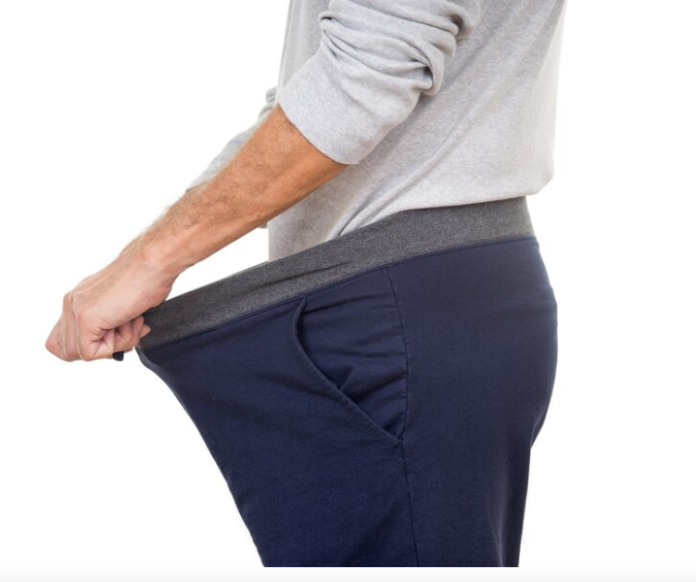The penis is the physical authentication of a male person. And though the average male is conscious of the presence of this organ and its biological functions, many men don’t know the changes that this organ goes through as its owner ages.
We, therefore, bring you the simple biology of what happens to your manhood as your age goes up!
Your penis isn’t what it used to be
Age leaves its mark on every part of your body, including your penis. Starting in your 40s, your testicles produce less testosterone, the hormone that helped your penis grow during puberty and fuels your sex drive. The decline in testosterone, along with other things related to aging, can change the size, shape, and function of this all-important organ.
It turns gray
Well your pubic hair does, anyway. Just like the hair on your head, pigment cells inside each pubic hair follicle produce a chemical called melanin that gives your hair its color — blond, brown, or black. As you age, pigment cells die, melanin production slows, and your pubic hair turns gray or white. Whether the hair down there goes gray at age 35 or 65 depends a lot on the genes you inherited from your parents.
Your penis naturally loses sensation as you age. So it may take more time, and more stimulation, for you to get aroused and reach orgasm
It shrinks
The dreaded shrinkage! A downsized penis may be due to age-related conditions, like high blood pressure or clogged blood vessels (arteriosclerosis), that reduce blood flow to it. The drop in blood flow, along with lower testosterone levels, can make this organ smaller. Putting on some weight creates the illusion of lost length. Folds of belly fat partially hide the penis, making it look smaller than it really is.
It curves
Whenever you injure your penis — whether from rough sex, sports, or an accident — scar tissue forms. By your 50s or 60s, you can have enough scar tissue buildup to make your penis bend or curve during an erection. The condition is called Peyronie’s disease. It’s often painful, and it can make sex uncomfortable. Treatments ranging from injections to surgery can lessen the curve and make sex more comfortable again.
The testicles shrink
For the same reason your penis shrinks with age — reduced testosterone — your testicles also get smaller. Injury, less blood flow, and anabolic steroid (synthetic testosterone) use can also be responsible for the size reduction. A smaller testicle can sometimes be a symptom of testicular cancer, too. If you have other symptoms, such as swelling, a lump, or a feeling of heaviness in a testicle, check in with your doctor.
your testicles also get smaller. Injury, less blood flow, and anabolic steroid use can also be responsible for the size reduction. A smaller testicle can sometimes be a symptom of testicular cancer…
The scrotum sags
Your skin naturally becomes less elastic as you get older. Just as the skin of your face and neck wrinkles and sags, so can the skin that covers your testicles. If the sight of a low-hanging scrotum bothers you too much to wear a bathing suit or causes pain when it rubs against your thigh, you can have scrotal rejuvenation surgery to give your sac a lift.
It’s less sensitive
Your penis naturally loses sensation as you age. So it may take more time, and more stimulation, for you to get aroused and reach orgasm. If the problem interferes with your sex life, don’t rub harder — you could irritate the sensitive skin covering this organ. Instead, talk to your doctor about possible treatments.
It loses its spring
The slightest breeze might have produced an erection when you were young. Now that you’re older, low hormone levels, less blood circulation, and nerve damage can make getting it up harder to accomplish. Erectile dysfunction becomes more of a problem the older you get. By age 70, about 70% of men will have trouble getting an erection. Fortunately, doctors have a number of drugs, devices, and surgical solutions to this problem.
By age 70, about 70% of men will have trouble getting an erection
It changes color
Fatty deposits can build up inside the walls of your blood vessels as you get older and limit the amount of blood that flows through them. Blood is what can give the tip of a penis a pink color. As blood flow slows, the penis head turns a lighter shade. Rarely, a change in penis color is a sign of cancer. If you also have other symptoms, like a bump or sore on your penis, see a doctor.
It goes bald
Pubic hair thickness varies from person to person and based on how much grooming you do. The hair around your penis, like the hair on your head, thins with age. Because it’s less visible than the hair on your scalp, you may not feel the need to do anything about it. But a hair transplant is always an option if you are sensitive about baldness down there.
Watson writes for WebMD


